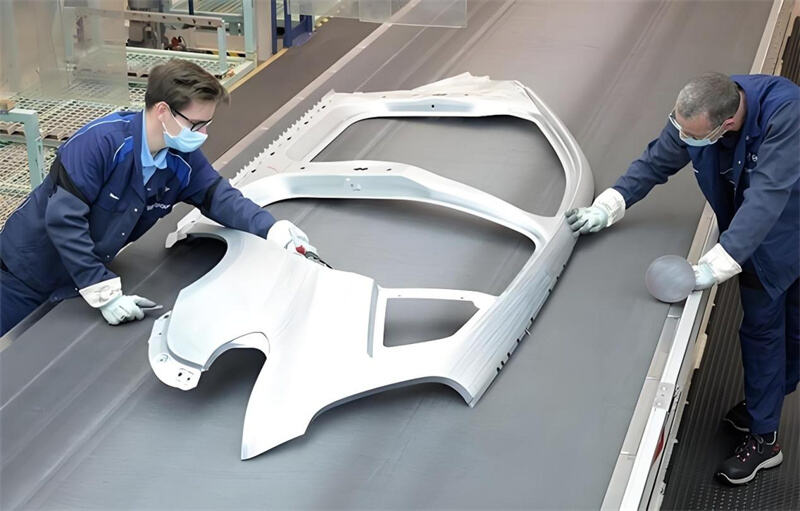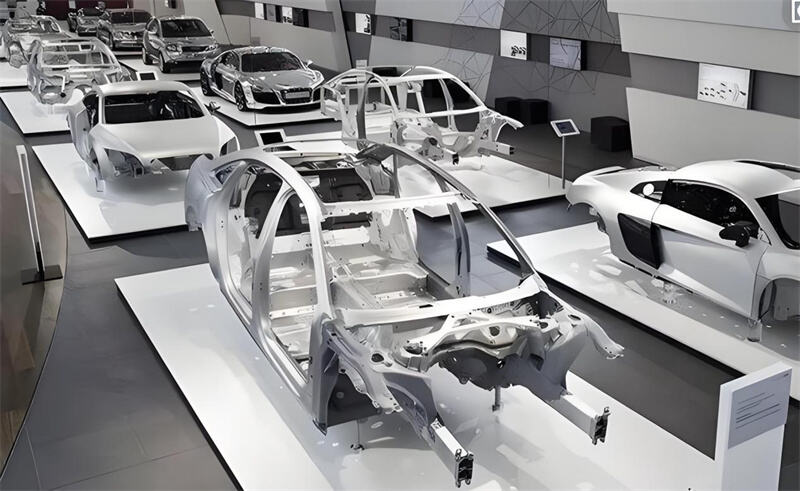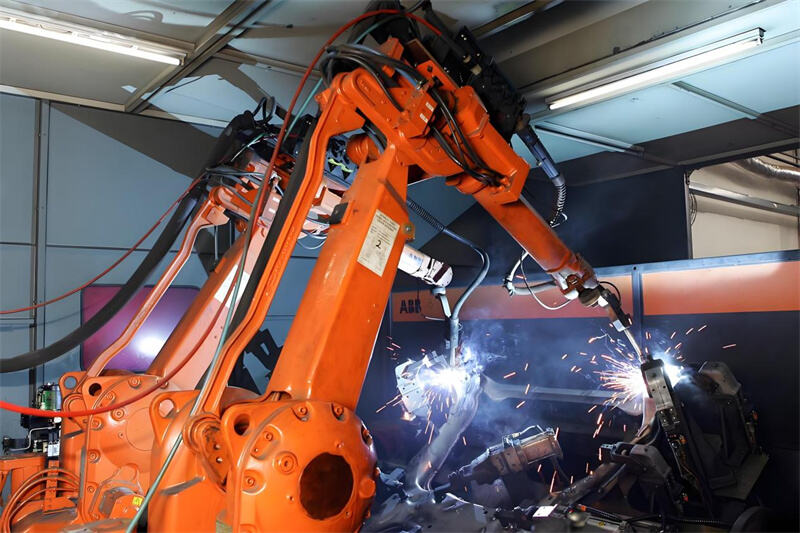A Comprehensive Guide to Automotive Component Manufacturing: Chassis, Stamped Parts, and Welded Assemblies
In today’s competitive automotive industry, the production of high-quality components is crucial for vehicle performance and safety. This comprehensive guide delves into the core processes of automotive component manufacturing—focusing on chassis, stamped parts, and welded assemblies. We will explore how cutting-edge automotive metal work practices, combined with precision techniques from top automotive metal stamping suppliers, are transforming the way vehicles are built.
Introduction: The Backbone of Modern Vehicles
Automotive manufacturing relies on a complex interplay of processes to create components that not only meet stringent safety standards but also enhance overall vehicle performance. Among these, the production of automobile sheet metal parts is fundamental. These parts form the basis of a vehicle’s chassis and body, directly impacting structural integrity and aesthetics.
In our facility, we specialize in advanced automotive metal work, ensuring that every stamped part and welded assembly is produced to the highest quality. For additional insights into our capabilities, please visit our Auto Stamping Parts page.

(Automobile door panel production)
Section 1: Understanding Automotive Chassis Manufacturing
The Importance of a Strong Chassis
The chassis is the structural framework of a vehicle, serving as the foundation upon which all other components are built. It must provide robust support for both the body and the mechanical systems of the car. High-quality car chassis parts are vital in ensuring:
- Safety: A strong chassis enhances crashworthiness and protects occupants.
- Performance: An optimized chassis improves handling, stability, and overall ride quality.
- Durability: Precision-engineered chassis components withstand the stresses of everyday driving.
Modern automotive metal work processes, including stamping and welding, enable the production of reliable and precise chassis components.

(Car body)
Key Chassis Components
Critical components in chassis manufacturing include:
- Frame Rails and Crossmembers: These support the vehicle’s overall structure.
- Suspension Mounts: Provide attachment points for the suspension system.
- Mounting Tabs: Secure various parts to the chassis and ensure proper alignment.
Manufacturers often refer to these parts collectively as chassis components. When sourced from reputable automotive metal stamping suppliers, these components are produced with exceptional precision and quality.
Section 2: The Role of Stamped Parts in Vehicle Assembly
What Are Stamped Parts?
Stamped parts are created by forming metal sheets into desired shapes using high-pressure stamping presses. These parts include body panels, doors, hoods, and other exterior elements as well as internal structural supports. In modern automotive manufacturing, stamped metal parts provide:
- Consistency: High-speed, automated processes ensure every part meets strict specifications.
- Efficiency: Mass production of parts helps reduce costs and production times.
- Design Flexibility: Complex shapes can be achieved without compromising on strength or aesthetics.
Advanced Stamping Techniques
Advanced stamping technology has transformed the production of automobile sheet metal parts. Key benefits include:
- High Precision: Computer-controlled presses and custom dies ensure each stamped part is made with exact tolerances.
- Reduced Waste: Efficient material use minimizes scrap, contributing to sustainable production practices.
- Scalability: High-volume production is possible without sacrificing quality, which is critical for meeting industry demands.
Steel stamping parts manufacturers invest heavily in these technologies to produce components that are both durable and lightweight, thereby enhancing vehicle performance and fuel efficiency.
Application in Vehicle Assembly
Stamped parts are integral to both the vehicle’s body and chassis. For example:
- Body Panels: The exterior panels (doors, fenders, roof panels) are stamped to create a visually appealing and aerodynamic design.
- Structural Supports: Components such as floor pans and reinforcing brackets are stamped to ensure the chassis remains rigid and strong.
These stamped metal parts play a crucial role in delivering a finished product that is both safe and aesthetically pleasing.
Section 3: The Critical Role of Welded Assemblies
Welding in Automotive Manufacturing
Welded assemblies are essential for joining various chassis components together. The welding process ensures that different metal parts, such as car under chassis parts and chassis mounting tabs, are securely bonded to form a cohesive and robust structure.
Benefits of Advanced Welding Techniques
- Structural Integrity: High-quality welding provides a continuous, seamless joint that significantly boosts the strength and durability of the chassis.
- Precision: Advanced welding methods ensure that each welded assembly meets stringent quality standards, minimizing defects and inconsistencies.
- Efficiency: Automation in welding, such as robotic welding systems, increases production speed while reducing labor costs.
These benefits are especially critical when producing components that must endure high stress and maintain safety standards over the vehicle's lifetime.
Innovations in Welding Assemblies
Modern automotive metal work incorporates innovative welding techniques that integrate with stamping processes. For example:
- Robotic Welding: Automated systems provide consistent, precise welds, ensuring uniformity across all production batches.
- Hybrid Processes: Combining welding with stamping in a single production line optimizes efficiency and improves overall part quality.
Such advancements have established welding assemblies as a key factor in ensuring that automobile sheet metal parts perform reliably under various operating conditions.

(Robotic Welding)
Section 4: Integrating Chassis, Stamped Parts, and Welded Assemblies for Optimal Vehicle Performance
Building a Unified Structure
The synergy between stamped parts and welded assemblies forms the backbone of modern vehicle manufacturing. By integrating these processes:
- Structural Cohesion: The combination of high-precision stamped parts and robust welded assemblies ensures that the vehicle chassis is both strong and lightweight.
- Enhanced Safety and Performance: A well-integrated chassis improves crashworthiness, handling, and ride comfort.
- Cost Efficiency: Streamlined production processes lead to reduced material waste and lower production costs, benefiting manufacturers and consumers alike.
Working with Leading Automotive Metal Stamping Suppliers
Choosing the right supplier is critical. Reputable automotive metal stamping suppliers provide:
- Quality Assurance: Consistent production of high-quality stamped metal parts and welded assemblies.
- Advanced Technology: Access to state-of-the-art automotive stamping press systems and automated welding solutions.
- Industry Expertise: Proven track records in producing chassis components that meet or exceed industry standards.
For more information about our capabilities in this field, visit our Auto Stamping Parts page.

(Shaoyi Metal Technology Co., Ltd.)
Conclusion: Shaping the Future of Automotive Component Manufacturing
The manufacturing of automobile sheet metal parts is at the heart of modern vehicle production. Advanced automotive metal work—through the use of precise stamping techniques and robust welding assemblies—ensures that every component, from chassis elements to exterior panels, meets the highest standards of safety, durability, and performance.
By combining these advanced processes, manufacturers can create vehicles that are not only innovative and aesthetically appealing but also structurally sound and cost-effective. This comprehensive approach is paving the way for the future of automotive component manufacturing.
For automotive manufacturers seeking to enhance quality and efficiency, partnering with reliable automotive metal stamping suppliers is essential. With continued advancements in technology, the integration of stamped parts and welded assemblies will remain a key driver of innovation in the automotive industry.

